Happy Hour
It’s late Friday afternoon and Colorado State University co-eds are leaving campus to get a jump start on the weekend. At CSU’s Scott Bioengineering building, however, it’s a different story.
Young girls stream into the building and beeline for the auditorium. The room buzzes with excitement and frenzied activity as female engineering students and school girls, grades five through ten, greet one another, separate into groups, and get ready to work.
For the next two hours, the 15 CSU engineering students and the 22 Fort Collins-area girls study electrical current and voltage, discuss Ohm’s law, and learn to solder electrical components. The scene replays with different lessons nearly every Friday during the spring semester.
Together, they are designing the lighting for a Habitat for Humanity home in Fort Collins for a single mother and her two small children.
Working together on this project, they are Pretty Brilliant.
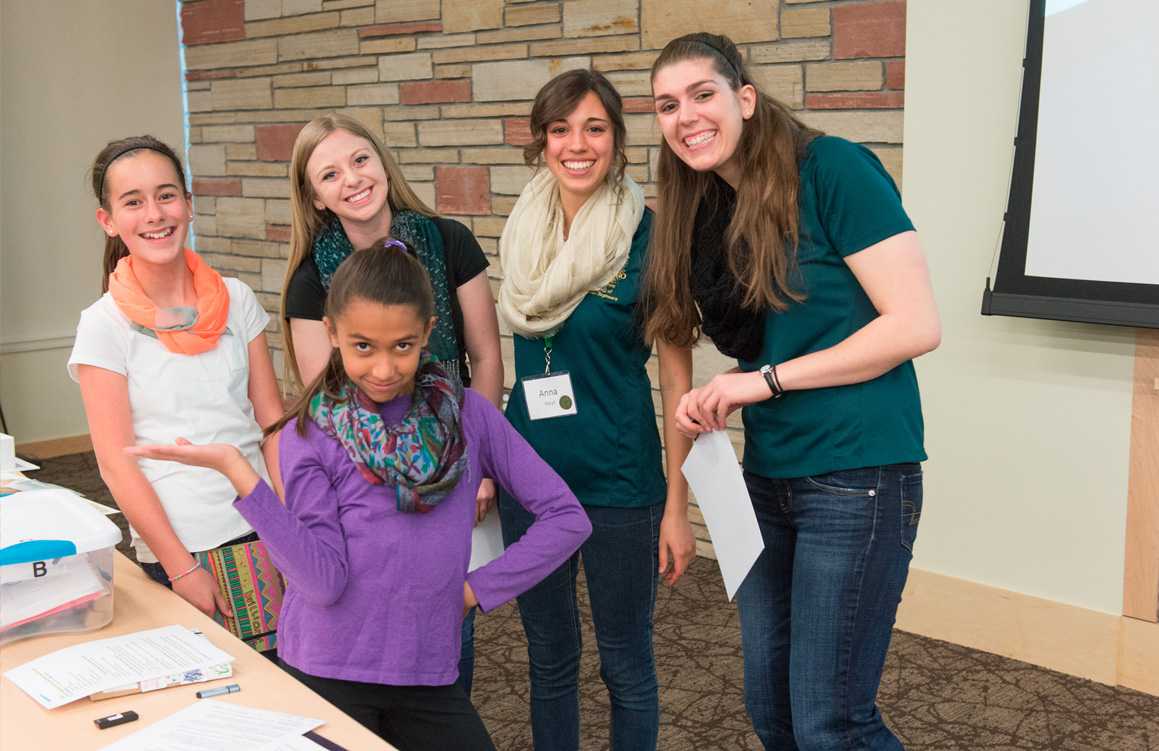
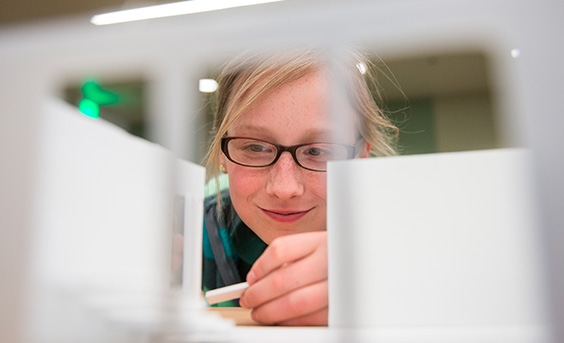
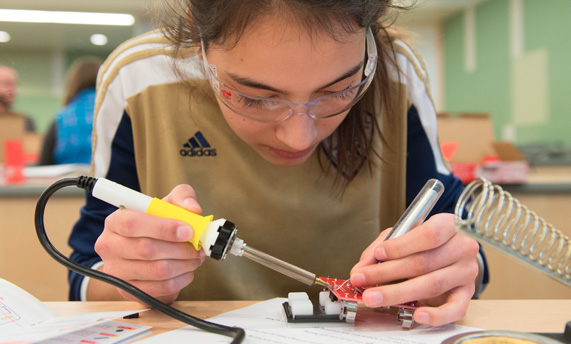
The Brainchild
Pretty Brilliant, the brainchild of Heidi Olinger and Anne Thorson who partnered with Laura Davis ’09 and Colorado State, turns young girls into design engineers for a semester and provides them with hands-on experience in a female-friendly environment.
With the support of the CSU collegiate section of the Society of Women Engineers, the 10- to 16-year-old girls are teamed with engineering majors who mentor them.
As design engineers, the girls are introduced to the importance of science, technology, engineering, and math, or STEM, and its applications. Pretty Brilliant, an initiative within Olinger’s nonprofit Pretty Brainy, also emphasizes the importance of community service.
Olinger and Davis led the program – Olinger with the concept and Davis, a mechanical engineer, who developed the technical curriculum.
“Textbook and classroom learning is not enough,” said Olinger. “For young girls, we’ve discovered that when the learning is hands-on and when it’s connected to community outreach in some way, when there is a real-world purpose or a philanthropic tie, students authentically learn.”
Mind the Gender Gap
Girls have outperformed boys in math and science classes since the 1990s. And yet, females are historically underrepresented in STEM fields – whether it’s in high school physics class or in the professional world as a mechanical engineer.
In 2013, just 12 percent of U.S. engineers were women. That number is rising, but slowly.
Professional female engineers
1960
1%
1990
9%
2013
12%
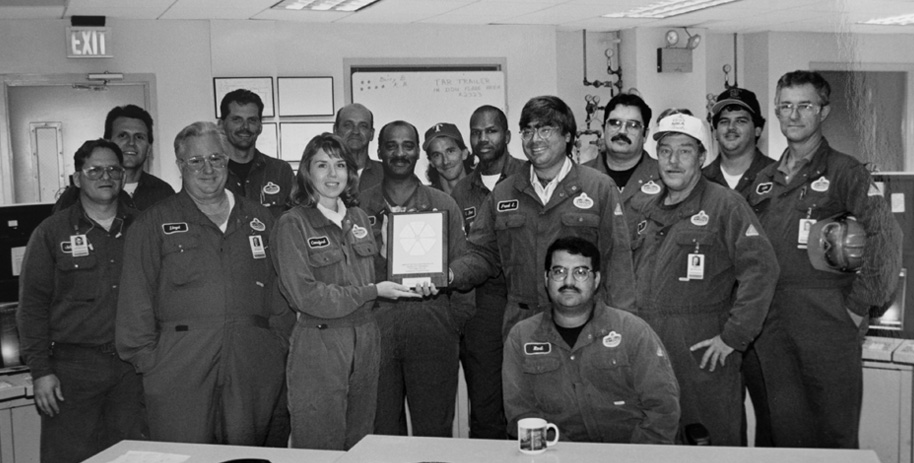
Terry Comerford, director of CSU’s Engineering Success Center, circa 1995 as process engineering superintendent at Amoco’s Texas City Refinery.
“… math and science aren’t just for boys.”
Several studies, including a study published in 2012 in the Journal of Women and Minorities in Science and Engineering, highlight the importance of getting girls involved in STEM early on – and to help girls understand that math and science aren’t just for boys.
“These girls will make their first choices, as soon as eighth grade, to pursue math and engineering-related careers,” said Terry Comerford, director of CSU’s Engineering Success Center, who also acts as the faculty advisor for SWE. “It’s a critical time to encourage and inspire young women.”
In middle school, many girls are interested in math and science, but shift away from those courses by high school, often because of peer pressure or because there are so few other female students enrolled.
“The challenge for girls pursuing a STEM field, especially engineering, is that they don’t necessarily know what engineers do. And they ask, ‘Will any of my friends be in my class?’” Comerford said.
2013 research in Personality and Social Psychology Bulletin calls out the importance of female role models in STEM and the importance of young girls having someone with whom they can connect or identify with. According to this study, female role models strengthen young women’s attitudes and self-concept and increase the likelihood they’ll consider a field like engineering as a career later on.
Pretty Brilliant both engages young girls in hands-on STEM lessons and also pairs them with mentors, female CSU engineering students, with whom participants can relate.
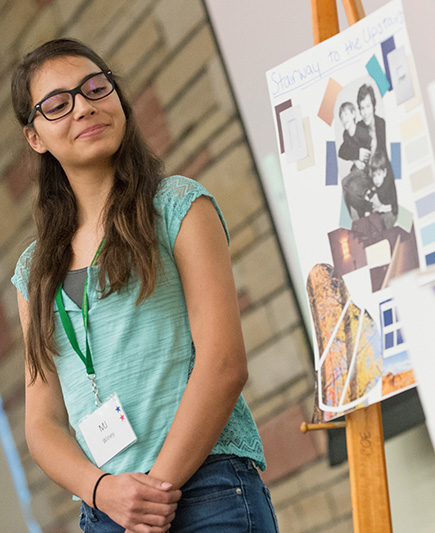
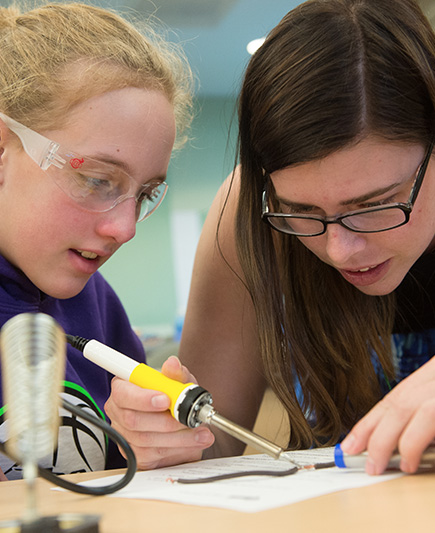
Those involved in the project – Comerford, Davis, the CSU students and Olinger – believe this approach is critical to Pretty Brilliant’s success. Many wish they could have been involved in a project like Pretty Brilliant while in elementary and middle school, including CSU mentor Courtney Spalt. Spalt comments on her Pretty Brilliant experience.
“In the beginning, the girls were a little shy, says Spalt, a junior in mechanical engineering. “Now they tell me all about their weekend. The greatest thing for me was watching them all grow and become more comfortable together and ultimately all grow and learn as a community. I am amazed by how much experience they already have and how quickly they pick up on things that they have never done before. They are brilliant.”
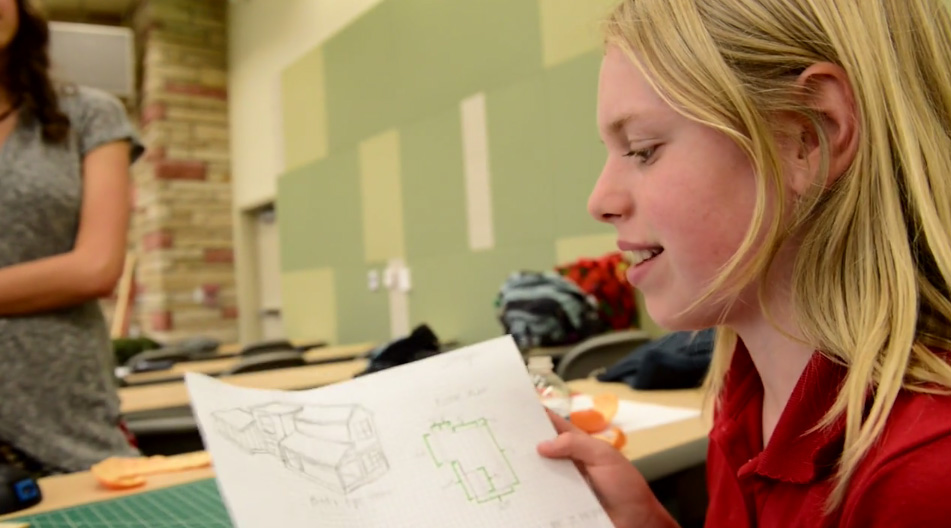
An Apprentice
Carolyn Carpenter, now a seventh grader, got involved with Pretty Brilliant and helped to design the exterior lighting of the home, including for the porch and garage. Her parents have always encouraged her interest in STEM classes and topics and the idea of a woman being an engineer is not foreign. Carpenter’s mother is a structural engineer.
But for Carolyn, Pretty Brilliant was different. Over the course of the spring semester, she learned about other options – such as environmental and chemical engineering – that she didn’t know about before.
She also enjoyed working with the collegiate mentors. She said, “The instructors were all really friendly and we could talk to them and relate to them. They weren’t like your teachers, they would talk to you about normal stuff, as well as stuff related to the program. It was fun.”
She also loved the hands on lessons such as soldering and building models of the Habitat house and that she was helping someone.
“I liked how we were able to be able to be doing this for someone, the Rzonca family, someone who needed it,” the seventh grader said.
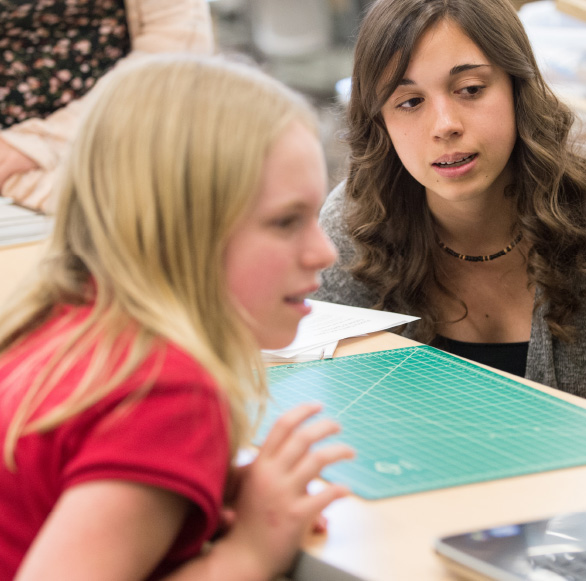
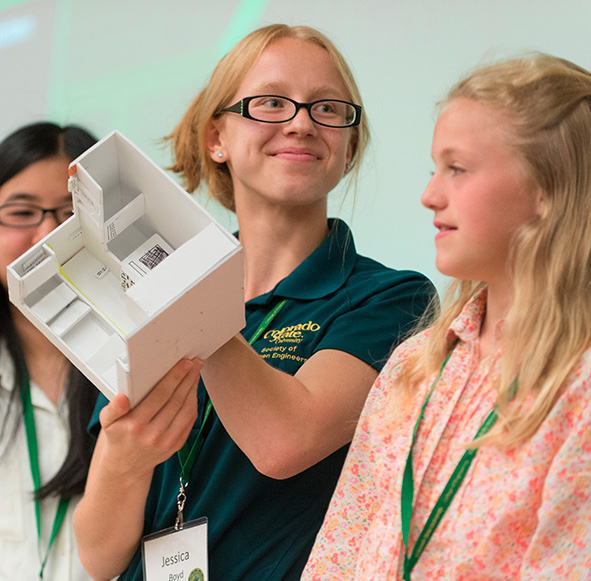
Home Sweet Home
What did Alea Rzonca, the future homeowner in the Habitat for Humanity Women Build think about Pretty Brilliant and its contributions to her build?
“It was really, really cool,” Rzonca said. “When Habitat told me about Pretty Brilliant and all that they were going to do, I was kind of blown away,” she said. “I don’t ever remember being encouraged in engineering or math.”
The single mother of two enjoyed getting to know the girls and appreciated how much effort and attention to detail they put into the project.
They quickly understood the importance of safety for her family and incorporated measures throughout the home. Plus, she added, “It was really cool to see all the things that the girls thought of that other, grown up engineers would not have thought of or would think to add.” For example, they thought of additional lighting under the kitchen cabinets and along the stairs for late-night bottle feedings.
And she appreciated their creativity. In an early interview with Pretty Brilliant, the Rzonca family shared that they enjoy watching movies. The girls designed a Hollywood-themed bathroom, with a star on the ceiling and a disco ball.
“The disco ball in the bathroom was a bit of a surprise, but it was really cool to see the creativity come to life,” she says. “They were all great ideas.”
She adds, I love the little models that they made. That was the first time that I saw what the home might even look like. I saw the floor plans, the blueprints, but it was hard to picture it. Their models (with the different quadrants of the home) was actually the first I could envision what the different rooms would look like.
“I loved that Pretty Brilliant was a part of my house. I hope that the girls come out for the ribbon cutting and get to see it all, everything that they did to put into an actual home. And maybe, one day, I can get my daughter in that program.”
Note to readers:
Ms. Rzonca returned to college five years ago when she was pregnant with her son. She graduated from Colorado State in December 2014 with a degree in Human Development and Family Services. She now counsels community members who are struggling to find local affordable housing in a job that began as an internship she completed as part of her degree at CSU.
In their own words
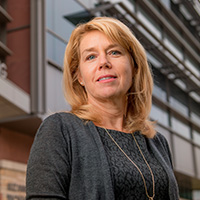
Terry Comerford, Colorado State University, College of Engineering
“The challenges for young women pursuing engineering include that they don’t necessarily know what they’re getting into. Many have been told they should consider engineering because they do well in math and science. It can be a difficult decision, especially if they’ve had little exposure to engineering and other sciences.” Younger girls ask, “Will any of my friends be in my class?” Comerford recalls a similar experience when she was that age. “And thinking back, many decades since I was making that choice as an eighth grader, I remember being very interested in taking shop and not signing up for it for exactly that reason. I didn’t want to be the only girl in shop class. I just remember we’d go down that hallway, and all the girls peeled off to home ec and the guys peeled off to shop.” I was fortunate to find mentors in high school who encouraged me to pursue engineering. When I enrolled in the late 70’s, there were very few women in my classes. By then, I didn’t mind — I had found my passion.

Laura Davis ’09, Colorado State University grad, New Belgium Brewing automation technician
“As a kid I enjoyed fixing toys even more than playing with them. As a tween, I loved tinkering on cars with my dad, an auto mechanic. I took science camps in the summer as a kid and also participated in a Saturday morning engineering club while a student at CSU. I am a problem solver and a fixer. I didn’t worry about, ‘Where are the females in my class?’ When I graduated as a mechanical engineer from the College of Engineering in 2010, I was 1 of 9 girls in a class of 90 graduates.”
Credits:
Gretchen Menand, story
Brian Buss, feature video
John Eisele, photography
Joe Mendoza, photography
Dawood Suleman, web design
Kortny Rolston, edits